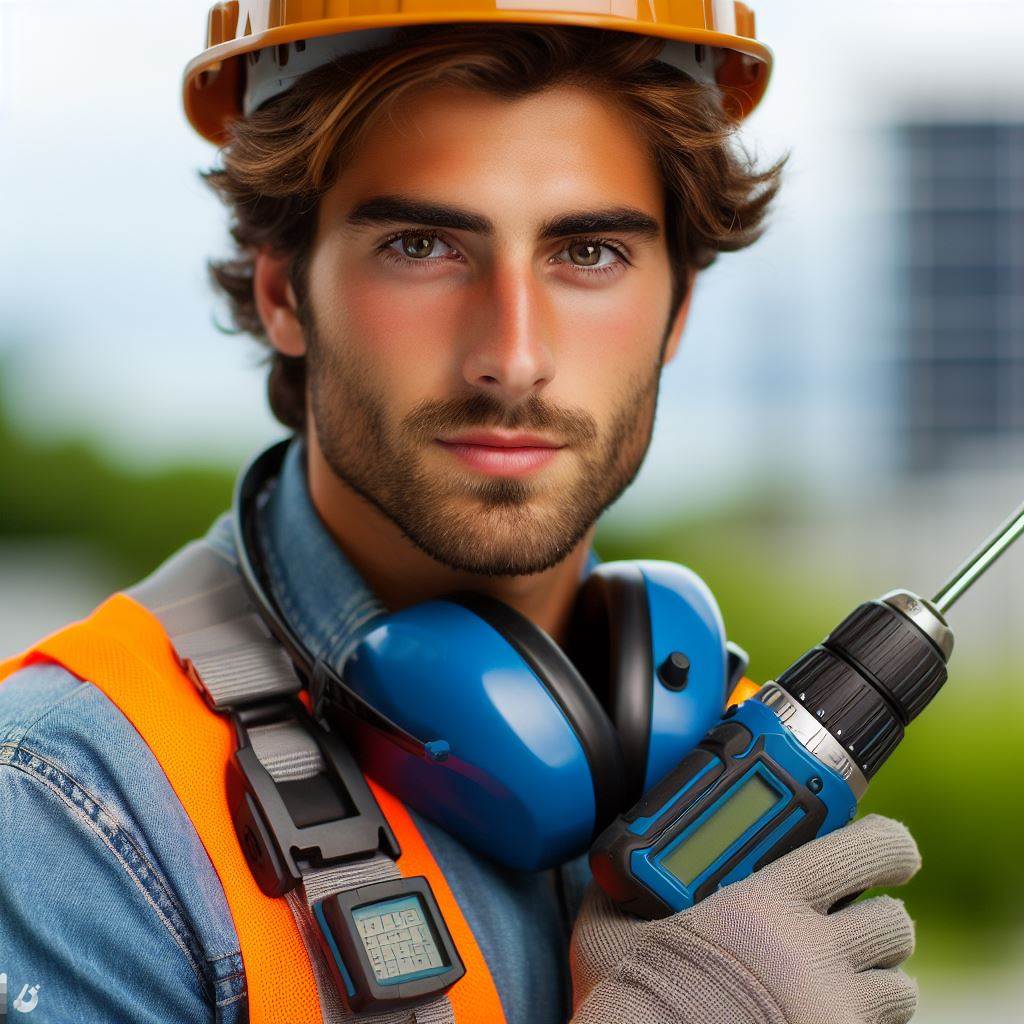Introduction
Mechanical engineers in Australia face unique challenges in adapting to the country’s diverse and demanding climate. Understanding these challenges is vital for the success of engineering projects in this environment.
In this blog post, we’ll delve into key factors shaping the landscape for mechanical engineers down under. Here’s a sneak peek at what’s to come:
- Temperature Extremes: Australia experiences a wide range of temperatures, impacting material selection and system efficiency.
- Harsh Environmental Conditions: From coastal areas to arid interiors, engineers must navigate diverse climates affecting equipment durability.
- Water Scarcity Concerns: As Australia grapples with water scarcity, engineers play a crucial role in designing efficient water usage systems.
- Renewable Energy Integration: The push for sustainability requires engineers to innovate in integrating renewable energy sources effectively.
Stay tuned to explore each challenge in depth and discover the innovative solutions Australian mechanical engineers are employing
Overview of the Australian climate
The Australian climate is known for its unique and diverse characteristics that pose various challenges for mechanical engineers.
Australia experiences a wide range of weather conditions due to its geographical location and vast size. The country stretches across multiple latitudes and longitudes, resulting in different climate zones and variations.
The variability of weather conditions across different regions in Australia
One of the key challenges for mechanical engineers in Australia is the variability of weather conditions across different regions. The country has a diverse mix of climates, ranging from tropical in the north to temperate in the south, and arid in the central regions.
Any extreme weather events that mechanical engineers need to consider
In the northern regions, such as Queensland and Northern Territory, mechanical engineers have to deal with hot and humid conditions. This can pose challenges in designing and maintaining equipment and systems that can withstand high temperatures and moisture levels.
In contrast, southern regions, like Victoria and Tasmania, experience colder temperatures and more extreme weather events such as frost, strong winds, and snowfall. Mechanical engineers need to design infrastructure and machinery that can function effectively in these conditions.
Australia is also known for its frequent droughts and bushfires, particularly in the arid regions.
Mechanical engineers need to consider the impact of these extreme weather events on their designs and ensure that the equipment can withstand and mitigate the risks associated with such conditions.
Climate change has further amplified the challenges faced by mechanical engineers in Australia. The country has seen an increase in heatwaves, storms, and bushfires in recent years.
Mechanical engineers need to adapt their designs to account for these changing climate patterns and develop sustainable solutions that reduce the environmental impact.
Additionally, the coastal regions of Australia are prone to cyclones and storm surges. Mechanical engineers must design structures and systems capable of withstanding the impact of these extreme weather events and ensure the safety of infrastructure and human life.
In a nutshell, the Australian climate presents unique challenges for mechanical engineers. The variability of weather conditions across different regions, along with extreme events like droughts, bushfires, and cyclones, require engineers to develop innovative and resilient solutions.
With the increasing impact of climate change, it becomes even more crucial for mechanical engineers to adapt their designs and contribute to a sustainable future.
Effect of heat on mechanical systems
- High temperatures can cause expansion and contraction of materials, leading to misalignment and wear in mechanical systems.
- Heat can also cause changes in material properties, such as reduced strength and increased brittleness.
- This can affect the performance and durability of mechanical components and systems.
- Mechanical engineers face challenges in designing systems that can withstand high temperatures and thermal expansion.
- They need to select appropriate materials that can handle heat and thermal stress.
Challenges faced by mechanical engineers in designing and maintaining systems that can handle heat
- Understanding the thermal properties of materials and how they will behave under different temperature conditions.
- Ensuring proper ventilation and cooling mechanisms to prevent overheating of mechanical systems.
- Considering the expansion and contraction of materials to avoid misalignment and failure.
- Designing robust insulation and heat dissipation methods to protect sensitive components.
- Implementing thermal stress analysis to predict and prevent mechanical failures.
Examples of specific industries and applications where heat-related challenges are prominent
- Power generation: Coal-fired power plants face challenges in dealing with high temperatures in combustion processes and heat transfer systems.
- Aerospace industry: Aircraft engines operate at extreme temperatures, requiring advanced cooling and material selection.
- Automotive industry: Engine components and exhaust systems need to withstand high temperatures from combustion processes.
- Manufacturing sector: Processes such as metal casting and welding generate significant heat and require efficient cooling methods.
- Renewable energy: Solar panels and concentrated solar power systems must handle intense heat from the sun.
In general, heat can have a significant impact on mechanical systems, affecting their performance and durability.
Mechanical engineers face challenges in designing and maintaining systems that can handle high temperatures, requiring an understanding of material properties and appropriate thermal management techniques.
Various industries, such as power generation, aerospace, automotive, manufacturing, and renewable energy, encounter heat-related challenges in their applications.
Overcoming these challenges is crucial for ensuring reliable and efficient operation of mechanical systems in the Australian climate.
Humidity and moisture-related challenges
Humidity and moisture can pose significant challenges for mechanical engineers working in the Australian climate. The high levels of humidity and moisture in this region can have a detrimental impact on mechanical systems, leading to issues such as corrosion and degradation.
Proper material selection and preventive maintenance practices are crucial in ensuring the longevity and functionality of mechanical systems in such conditions.
Impact of high humidity and moisture on mechanical systems
- Increased humidity can cause condensation, leading to the accumulation of moisture on mechanical components.
- Moisture can penetrate into sensitive areas of mechanical systems, causing electrical failures and short circuits.
- The presence of moisture can lead to the growth of mold and bacteria, which can affect indoor air quality.
- Mechanical systems exposed to high humidity may experience reduced efficiency and performance.
- Moisture can cause the deterioration of lubricants and greases, resulting in increased friction and wear on mechanical components.
Corrosion and degradation issues faced by mechanical engineers
In humid environments, corrosion becomes a significant concern for mechanical engineers. The combination of moisture and oxygen accelerates the corrosion process, leading to the degradation of mechanical components and structures.
- Corrosion can weaken metal structures, leading to integrity issues and potential safety hazards.
- Components such as pipes, valves, and connectors can experience corrosion-induced blockages or leaks.
- Corrosion can cause system failures and unplanned downtime, resulting in increased maintenance and repair costs
- Structural corrosion can compromise the stability of buildings and infrastructure in humid environments.
Importance of proper material selection and preventive maintenance practices
To mitigate the challenges posed by high humidity and moisture, mechanical engineers must employ proper material selection and follow preventive maintenance practices.
Your Personalized Career Strategy
Unlock your potential with tailored career consulting. Get clear, actionable steps designed for your success. Start now!
Get Started- Selecting materials with high corrosion resistance is essential for ensuring the longevity of mechanical systems.
- Coatings and corrosion inhibitors can be applied to protect susceptible components from moisture-induced degradation.
- Regular inspections and monitoring of mechanical systems can help identify corrosion or moisture-related issues at an early stage.
- Implementing proper drainage systems and ventilation can help control humidity levels and minimize moisture accumulation.
- Developing comprehensive maintenance schedules and following recommended procedures can prevent or mitigate corrosion and degradation.
In review, the challenges posed by high humidity and moisture in the Australian climate require mechanical engineers to be proactive in addressing corrosion and degradation issues.
By selecting appropriate materials and implementing preventive maintenance practices, the longevity and functionality of mechanical systems can be ensured, even in such harsh conditions.
Read: Top Plumbing Trends in Australian Engineering
Dealing with Dust and Sand
Dust storms and sandy environments pose unique challenges for mechanical engineers in Australia. The accumulation of dust can have detrimental effects on mechanical systems and regular cleaning is necessary to mitigate these issues.
In specific industries and regions across the country, the challenges of dust and sand are particularly prominent. Let’s delve into these challenges and their implications in more detail.
Challenges Posed by Dust Storms and Sandy Environments
- Dust storms and sandy environments create abrasive conditions that can cause accelerated wear and tear on mechanical equipment.
- The presence of dust and sand particles can clog air filters, reduce cooling efficiency, and compromise the performance of engines and ventilation systems.
- Components such as bearings, gears, and seals are at risk of increased friction and damage in dusty and sandy conditions.
- Dust accumulation on electronic circuits can lead to electrical failures, malfunctions, and even fire hazards.
The Need for Regular Cleaning
Regular cleaning is imperative for mechanical systems in dust and sand-prone environments. Cleaning procedures vary depending on the equipment and location, but some common methods include:
- Periodic inspections to assess dust accumulation levels and identify potential problem areas.
- Using compressed air or vacuum systems to remove dust from filters, vents, and equipment surfaces.
- Implementing protective measures such as dust covers or air filtration systems to prevent dust infiltration.
- Applying lubricants and protective coatings to minimize the effects of abrasive particles on mechanical components.
Specific Industries and Regions of Concern
Certain industries and regions in Australia face particularly prominent challenges when it comes to dust and sand. These include:
- Mining: The mining industry operates heavy machinery in dusty environments, leading to increased maintenance needs and equipment failures.
- Agriculture: Farming activities often take place in regions prone to dust storms, affecting machinery used for harvesting and irrigation.
- Construction: Building sites in sandy regions require specialized equipment and cleaning protocols to maintain optimal functionality.
- Central Australia: The arid landscapes and desert regions of central Australia are known for their significant dust storms and sandy conditions.
In short, the challenges posed by dust storms and sandy environments in Australia require mechanical engineers to implement proactive measures to ensure the efficient operation and longevity of mechanical systems.
Regular cleaning, maintenance, and protective strategies are crucial for mitigating the negative impacts of dust accumulation.
By addressing these challenges head-on, engineers can contribute to the resilience and longevity of mechanical equipment in various industries and regions across the country.
Read: The Future of Plumbing Tech in Australia

Design considerations for extreme weather events
Extreme weather events, such as cyclones and bushfires, are becoming increasingly common in Australia due to climate change.
These events pose significant challenges for mechanical engineers, who must consider their impact when designing systems and infrastructure.
In this blog section, we will explore the importance of designing resilient and durable systems that can withstand such events, as well as outline specific design considerations and strategies to mitigate the associated risks.
The importance of designing resilient and durable systems that can withstand such events
One of the key considerations for mechanical engineers is the need to design systems that can withstand the strong winds and heavy rainfall associated with cyclones.
This includes ensuring that structures are properly anchored and reinforced, and that materials selected are resistant to wind and water damage. Additionally, engineers must consider the potential for debris impact and design protective measures to minimize the risk.
Similarly, bushfires present unique challenges, with the intense heat and potential for ember attack impacting the functionality of mechanical systems.
It is crucial for engineers to incorporate fire-resistant materials and design features that can prevent the ignition and spread of fires.
This may include using fire-rated insulation, employing automatic fire suppression systems, and implementing proper ventilation strategies to prevent smoke infiltration.
Some specific design considerations and strategies that can be implemented to mitigate the risks
Designing resilient and durable systems is paramount in ensuring the safety and functionality of infrastructure during extreme weather events.
The economic and social cost of failures can be immense, making it vital for engineers to go beyond standard design practices and consider the specific challenges posed by the Australian climate.
Implementing redundancy and backup systems is a critical strategy for enhancing the resilience of mechanical systems. This involves designing systems with redundant components, allowing for continued operation even if one component fails.
Backup power sources, such as generators or battery systems, can also provide crucial continuity during power outages, ensuring the functionality of essential services.
Enhancing Climate Resilience through Smart Technologies in Mechanical Engineering Design
Another important consideration is the use of smart technologies and sensors to monitor and adapt to changing weather conditions. By integrating sensors that can detect extreme weather events, engineers can implement real-time adjustments to system operations.
This may include automatically shutting down certain processes, activating protective measures, or diverting resources to minimize damage.
Climate change projections indicate that the frequency and intensity of extreme weather events will continue to rise in the future, necessitating proactive design strategies.
It is crucial for mechanical engineers to consider the long-term impacts and incorporate climate resilience into their designs. This can involve using predictive modeling to assess potential future scenarios and designing systems that can adapt to changing weather patterns.
Stand Out with a Resume That Gets Results
Your career is worth more than a generic template. Let us craft a resume and cover letter that showcase your unique strengths and help you secure that dream job.
Get Hired“Building Resilience: Collaborative Approaches for Climate-Ready Infrastructure in Australia”
Collaboration between mechanical engineers, architects, urban planners, and other relevant professionals is also crucial in effectively addressing the challenges of the Australian climate.
By working together, these professionals can integrate climate resilience into the design of entire communities, ensuring that buildings, infrastructure, and systems work harmoniously to withstand extreme weather events.
Most importantly, mechanical engineers play a vital role in designing systems and infrastructure that can withstand extreme weather events in the Australian climate.
By considering the unique challenges posed by cyclones and bushfires, and implementing strategies such as redundancy, smart technologies, and collaboration, engineers can enhance the resilience of their designs.
It is imperative that engineers go beyond standard design practices and proactively address the risks associated with the changing climate to ensure the safety and functionality of our built environment.
Read: A Day in the Life of an Aussie Plumber
Regulatory and compliance requirements
Regulatory and compliance requirements are essential for mechanical engineers working in the Australian climate. These requirements ensure that safety and quality standards are met, and it is important for engineers to stay updated with these regulations.
Failure to comply with these requirements can have serious consequences for both the engineers and their projects.
Specific Regulations and Compliance Standards
There are several specific regulations and compliance standards that mechanical engineers need to adhere to in relation to the Australian climate:
- Australian Building Codes Board (ABCB): Mechanical engineers must comply with the National Construction Code (NCC), which includes the Building Code of Australia. This code regulates the design and construction of buildings, including their HVAC (heating, ventilation, and air conditioning) systems.
- Standards Australia: Mechanical engineers need to follow various standards set by Standards Australia, such as AS 1668 on ventilation and air conditioning, AS 1851 on routine service of fire protection systems, and AS/NZS 3000 on electrical installations.
- Environmental Protection Authority (EPA): Mechanical engineers must adhere to environmental regulations set by the EPA to minimize the impact of their projects on the environment. This includes compliance with air quality standards and emissions regulations.
- Work Health and Safety (WHS) Regulations: Mechanical engineers need to comply with WHS regulations to ensure the safety and well-being of workers during the construction and operation of their projects. This includes conducting risk assessments, implementing safety measures, and providing training.
Importance of Staying Updated
It is crucial for mechanical engineers to stay updated with these requirements for several reasons:
- Safety: Compliance with regulations ensures the safety of workers, occupants, and the general public. Adhering to quality standards minimizes the risk of accidents and failures in mechanical systems.
- Legal Obligations: Mechanical engineers have a legal obligation to comply with these regulations. Failure to do so can lead to legal action, fines, and even imprisonment.
- Professional Reputation: By staying updated and complying with regulations, mechanical engineers maintain their professional reputation. Reputation is crucial in the engineering industry and non-compliance can damage trust and credibility.
- Project Success: Compliance with regulations increases the chances of project success. By meeting safety and quality standards, projects are more likely to be completed on time, within budget, and to the satisfaction of clients.
Potential Consequences of Non-Compliance
Non-compliance with regulatory and compliance requirements can have severe consequences for mechanical engineers and their projects:
- Legal Consequences: Non-compliance can result in legal action, including fines and penalties. In extreme cases, engineers may face imprisonment.
- Project Delays: Failure to comply with regulations can lead to project delays. Regulatory authorities may require modifications or even halt construction until compliance is achieved. This can result in additional costs and loss of client trust.
- Health and Safety Risks: Non-compliance compromises the safety of workers and occupants. Mechanical systems that do not meet standards can pose significant health and safety risks, leading to accidents and injuries.
- Reputational Damage: Non-compliance damages the professional reputation of mechanical engineers and their firms. Negative publicity, loss of clients, and difficulty acquiring future projects are all potential consequences.
In essence, mechanical engineers working in the Australian climate have specific regulatory and compliance requirements that they must adhere to.
Staying updated with these requirements is crucial to ensure safety, quality, and project success. Non-compliance can lead to legal, financial, and reputational consequences, emphasizing the importance of following these regulations diligently.
Read: How to Become a Plumber in Australia
Find Out More: Green Carpentry: Australia’s New Trend
Conclusion
In summary, the challenges faced by mechanical engineers in the Australian climate are significant. The extreme heat, unpredictable weather patterns, and harsh environmental conditions pose obstacles for infrastructure development and maintenance.
Understanding and addressing these challenges is vital for the success and sustainability of engineering projects in Australia.
By comprehending the unique climate conditions, engineers can design resilient structures and systems that can withstand the demands of the environment.
Proper insulation, ventilation, and cooling mechanisms must be implemented to combat the intense heat. Additionally, incorporating renewable energy sources and sustainable practices can reduce the impact on the climate.
It is crucial for engineers, both current professionals and aspiring individuals, to stay updated on the latest technologies and advancements relevant to tackling these challenges.
Collaboration among experts, research institutions, and government bodies is also instrumental in finding effective solutions.
As professionals, we must prioritize the importance of addressing Mech Eng challenges in the Australian climate. Our efforts will contribute to the development of a more sustainable and resilient built environment that can thrive despite the adversities of the climate.
Transform Your LinkedIn for Maximum Impact
Elevate your professional brand with a LinkedIn profile that attracts recruiters, showcases your expertise, and maximizes opportunities. Stand out in your industry with a profile built for success.
Boost ProfileLastly, let us acknowledge the significance of understanding and addressing Mech Eng challenges in the Australian climate. As we embark on future projects and careers, let us remember the need for adaptation, innovative solutions, and responsible practices.
By doing so, we can ensure a better future for ourselves, our communities, and the environment. Together, we can overcome these challenges and build a more resilient Australia.




